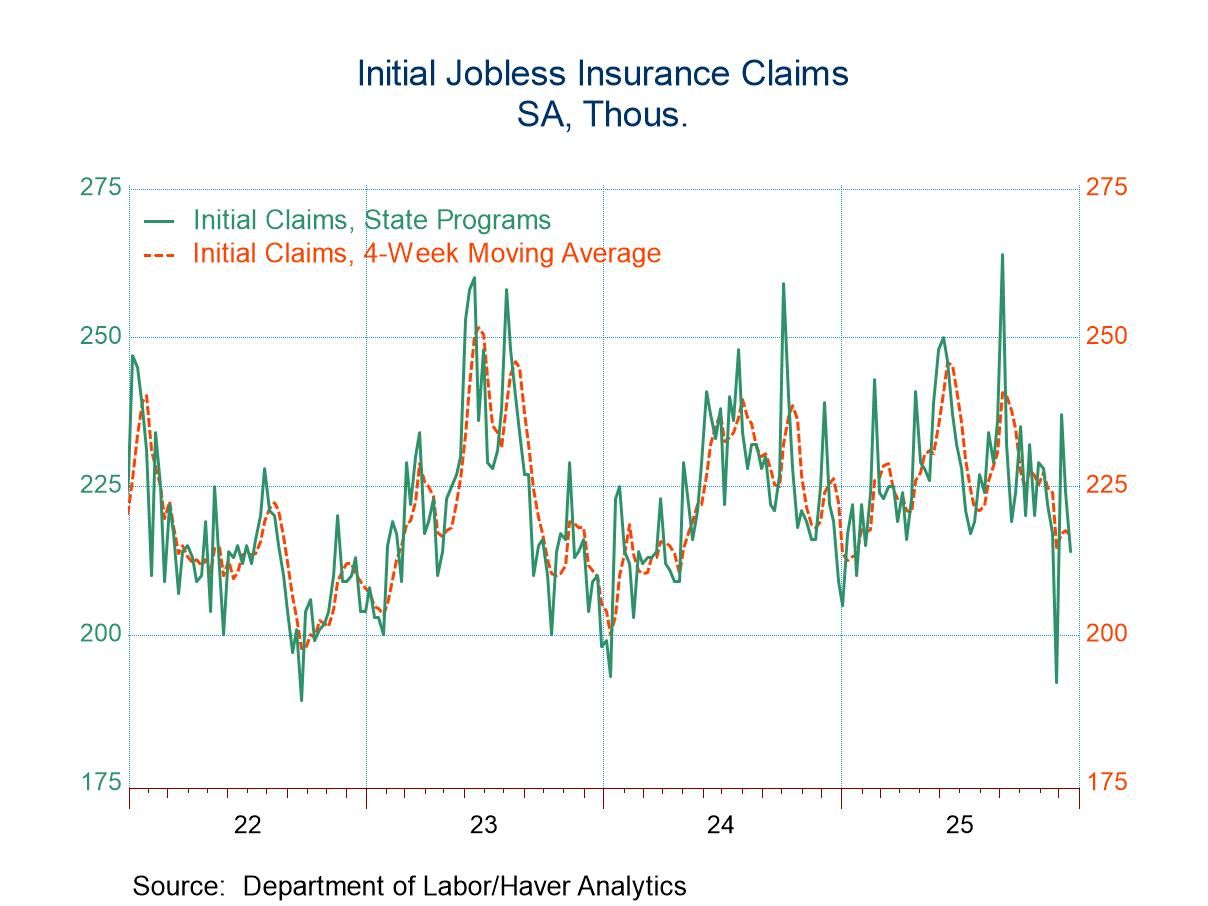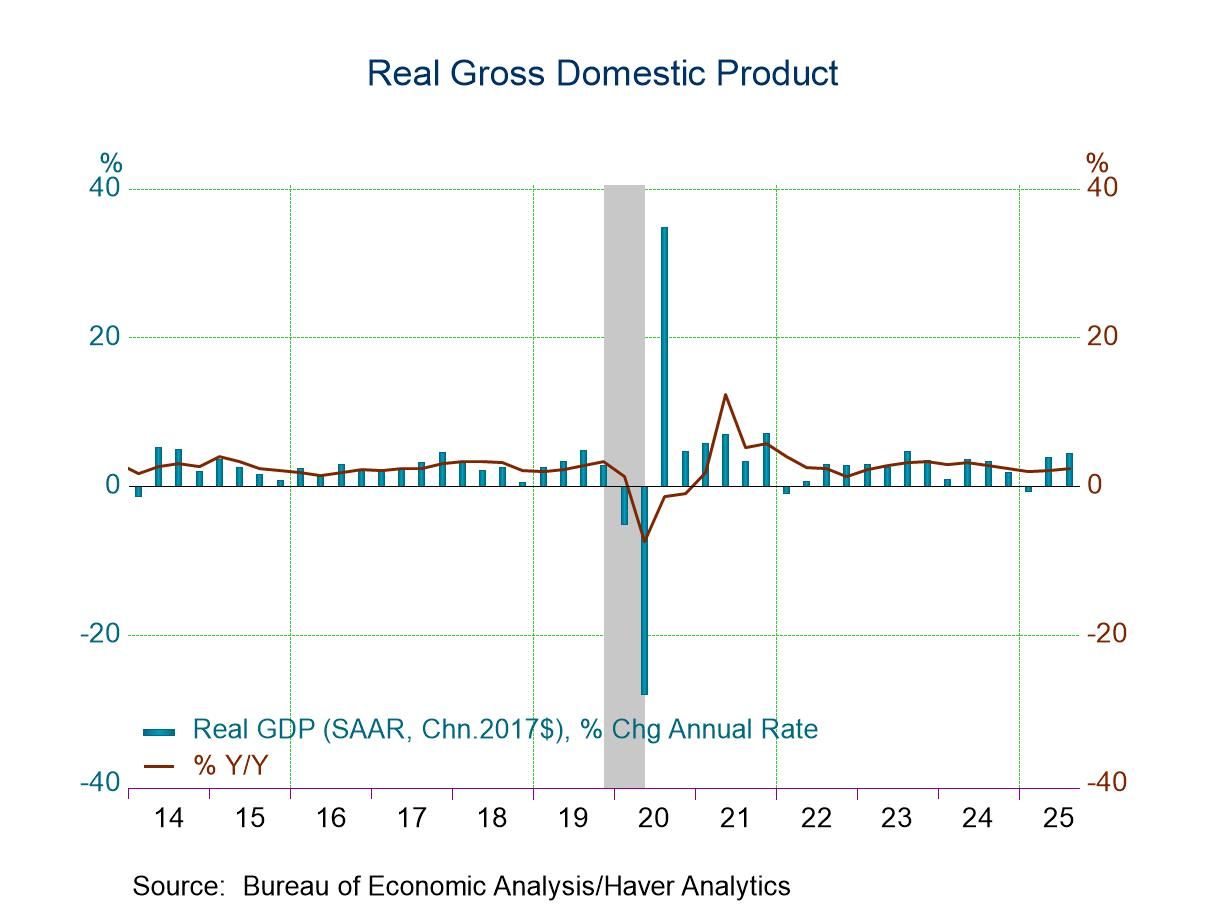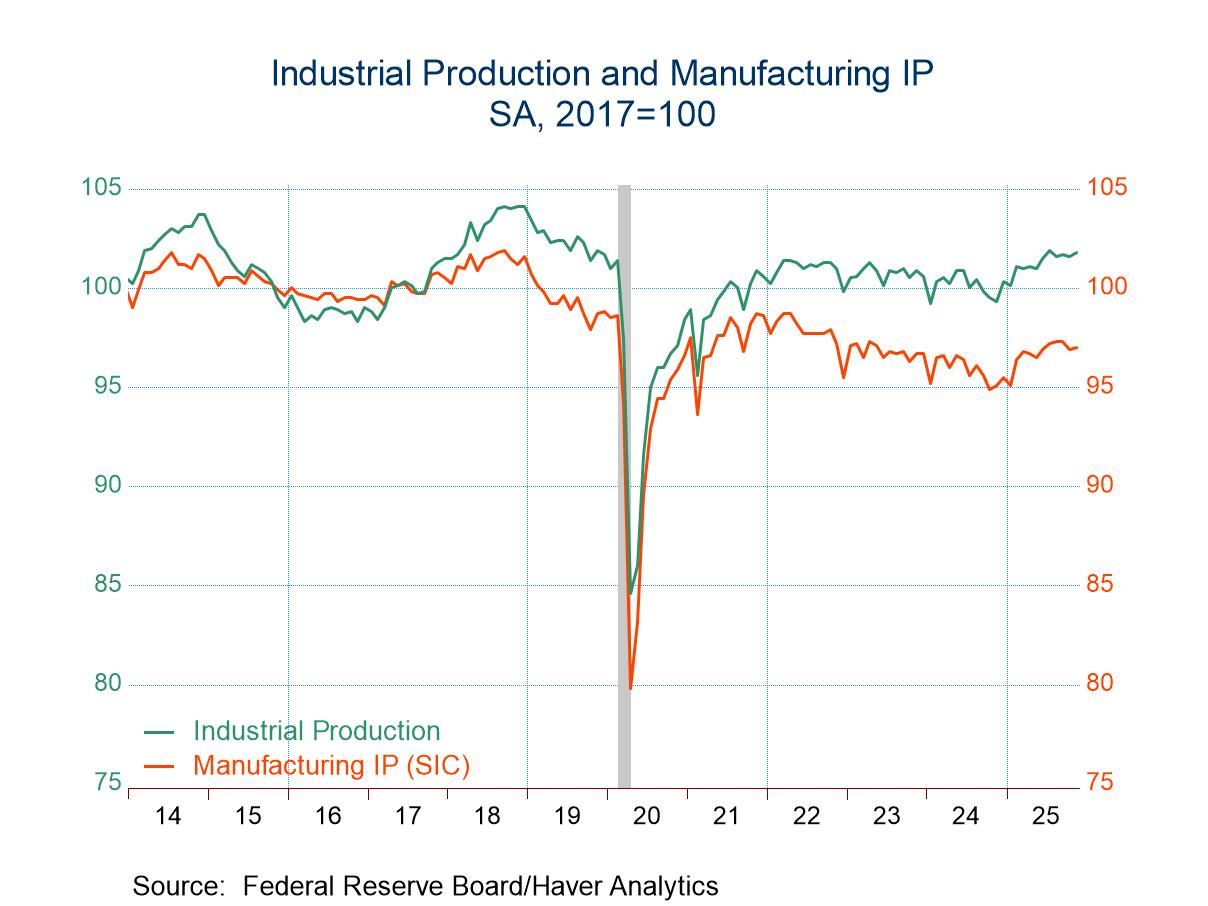U.S. Jobless Claims Decrease for a Second Week
Summary
- Initial claims rangebound for 5 months just below 240,000.
- Insured unemployment hovers around 1.7 million since February.
- Insured unemployment rate returns to 1.1%.


Initial claims for unemployment insurance were 230,000 seasonally adjusted in the week ending August 19, down from 240,000 the week before, which was revised slightly from 239,000. The four-week average was 236,750, up slightly from 234,500 in the prior week. The Action Economics Forecast Survey had expected 238,000 new claims in the latest week.
In the August 12 week, the number of continued weeks claimed, or “insured unemployment,” was 1.702 million, down 9,000 from 1.711 million the week before, which was revised from 1.716 million.
The insured unemployment rate, that is, continued claims as a percentage of covered employment, decreased to 1.1% from the prior week’s 1.2%. The series low was 0.9% back in July 2022; the series began in 1971. During the recession of 2008-2009, the rate reached a high of 4.9%; during the pandemic period of early 2020, the rate reached an all-time high of 15.9%, although that was clearly due to a non-economic cause.
In the August 5 week, the total number of continued weeks claimed for all unemployment insurance programs was 1.839 million, up slightly from 1.835 million in the July 29 week. The recent high was 2.000 million in the week of February 25. These data are not seasonally adjusted; the total includes federal employees, newly discharged veterans, extended benefits and other specialized programs. Claims in programs related to the Covid pandemic are no longer included in the main Labor Department press release since those programs have expired.
The unemployment situation varies widely across the various states and territories. In the August 5 week, the highest state [and territory] rates were in New Jersey (2.5%), Puerto Rico (2.4%), California (2.2%), Rhode Island (2.1%) and Massachusetts (2.0%). The lowest rates were in South Dakota (0.2%), Virginia, Kansas, Kentucky and North Dakota (all 0.4%) and North Carolina, New Hampshire, Nebraska, Florida, Tennessee, Wyoming, Iowa and Alabama (all 0.5%). Other sizable states were New York and Oregon (1.9%), Pennsylvania (1.8%), Illinois (1.6%), Texas (1.1%) and Ohio (0.8%). These state data are not seasonally adjusted.
Data on weekly unemployment claims go back to 1967 and are contained in Haver's WEEKLY database; they are summarized monthly in USECON. Data for individual states are in REGIONW back to December 1986. The expectations figure is from the Action Economics Forecast Survey, in the AS1REPNA database.


Carol Stone, CBE
AuthorMore in Author Profile »Carol Stone, CBE came to Haver Analytics in 2003 following more than 35 years as a financial market economist at major Wall Street financial institutions, most especially Merrill Lynch and Nomura Securities. She had broad experience in analysis and forecasting of flow-of-funds accounts, the federal budget and Federal Reserve operations. At Nomura Securities, among other duties, she developed various indicator forecasting tools and edited a daily global publication produced in London and New York for readers in Tokyo. At Haver Analytics, Carol was a member of the Research Department, aiding database managers with research and documentation efforts, as well as posting commentary on select economic reports. In addition, she conducted Ways-of-the-World, a blog on economic issues for an Episcopal-Church-affiliated website, The Geranium Farm. During her career, Carol served as an officer of the Money Marketeers and the Downtown Economists Club. She had a PhD from NYU's Stern School of Business. She lived in Brooklyn, New York, and had a weekend home on Long Island.





